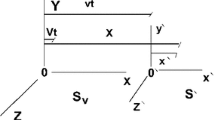A finite vacuum energy density implies the existence of a UV scale for gravitational modes. This gives a phenomenological scale to the dynamical equations governing the cosmological expansion that must satisfy constraints consistent with quantum measurability and spatial flatness. Examination of these constraints for the observed dark energy density establishes a time interval from the transition to the present, suggesting major modifications from the thermal equations of state far from Planck density scales. The assumption that a phase transition initiates the radiation dominated epoch is shown under several scenarios to be able to produce fluctuations to the CMB of the order observed. Quantum measurability constraints (eg. uncertainly relations) define cosmological scales bounded by luminal expansion rates. It is shown that the dark energy can consistently be interpreted as being due to the vacuum energy of collective gravitational modes which manifest as the zero-point motions of coherent Planck scale mass units prior to the UV scale onset of gravitational quantum de-coherence for the cosmology. A cosmological model with multiple scales, one of which replaces an apparent cosmological “constant”, is shown to reproduce standard cosmology during intermediate times, while making the exploration of the early and late time cosmology more accessible.
Similar content being viewed by others
References
Overhauser A.W., Colella R., (1974). Phys. Rev. Lett. 33: 1237
Colella R., Overhauser A.W., Werner S.A., (1975). Phys. Rev. Lett. 34: 1472
Bennett C.L. et al., (2003). Astrophys. J. Supp. 148, 1
J. Lindesay, “Quantum coherence arguments for cosmological scale”, SLAC-WD-050, presented at SLAC Theory Seminar, 4 May 2005.
J. Lindesay, “Evidence for a cosmological phase transition from the dark energy scale”, presented to annual NSBP conference, astro-ph/0604342 (2006) 42 pp.
A. G. Riess et al., Astron. J. 116, 1009 (1998); P. Garnavic, et al., Astrophys. J. 509, 74 (1998); S. Perlmutter et al., Astrophys. J. 517, 565 (1999).
Particle Data Group, Astrophysics and Cosmology, as posted (2006).
R. H. Lambert, Am. J. Phys. 36, 417–420 (1968). More generally see H. Weyl, Math. Ann. 71, 441 (1912).
Casimir H.B.G., (1948). Proc. K. Ned. Akad. Wet. 51, 793
E. M. Lifshitz, Soviet Phys. JETP 2, 73 (1956). I. D. Dzyaloshinskii, E. M. Lifshitz, and I. P. Pitaevskii, Soviet Phys. Usp. 4, 153 (1961); I. D. Landau and E. M. Lifshitz, Electrodynamics of Continuous Media (Pergamon, Oxford, 1960), pp. 368–376.
Boyer T.H., (1968). Phys. Rev. 174: 1764
Kleppner D., (1990). Phys. Today 43, 9–11
J. A. Wheeler and R. P. Feynman, Rev. Mod. Phys. 17, 157 (1945); and Rev. Mod. Phys. 21, 425 (1949).
J. V. Lindesay and H. P. Noyes, “Non-perturbative, unitary quantum-particle scattering amplitudes from three-particle equations”, hep-th/0203262, Found. Phys. 34, 1573–1606 (2004).
N. Bohr and L. Rosenfeld, “On the question of the measurability of electromagnetic field quantities”, in Selected Papers of Leon Rosenfeld, pp. 357–400, Cohen and Stachel, eds. (Reidel, Dordrecht, 1979) translated from Mat.-fys. Medd. Dan. Vid. Selsk. 12(8) (1933).
To examine a textbook exposition on degenerate systems, see R. K. Pathria, Statistical Mechanics, 2nd edn. (Butterworth-Heinemann 1996).
J. Lindesay and H. P. Noyes, Proc. of the Texas at Stanford 22nd Texas Symposium on Relativistic Astrophysics at Stanford University, December 13–17 (2004); SLAC-R-752, eConf:C041213, Poster 1304.
J. V. Lindesay, H. P. Noyes, and E. D. Jones, Phys. Lett. B 633, 433–435 (2006), astro-ph/0412477 v3, 7 pp.
E. D. Jones, private communication to H. Pierre Noyes c. 1997. The result of Jones’ calculation which gave ΩΛ = 0.6 ± 0.1 is quoted in Aspects II (Proc. of the Alternative Natural Philosophy Association 20), K. G. Bowden, ed. (University Press, Cambridge, 1999), p. 207.
E. D. Jones, conversations with H. Pierre Noyes starting in the 1990’s when there was no enthusiasm in academic cosmologists’ circles for a “cosmological constant” other than zero, let alone a small positive one.
Bernstein J., Dodelson S., (1991). Phys. Rev. Lett. 66, 683–686
Higgs P.W., (1966). Phys. Rev. 145(4): 1156
A. Riotto, “Inflation and the theory of cosmological perturbations”, Lectures from the Summer School on Astroparticle Physics and Cosmology, Trieste, hep-ph/0210162 (2002).
J. Lindesay, “An introduction of multiple scales in a dynamical cosmology”, gr-qc/0605007 (2006), 8 pp.
A. J. S. Hamilton, and J. P. Lisle, “The river model of black holes”, gr-qc/0411060 (2004) 14 pp.
J. Lindesay, “Thermal evolution of a dual scale cosmology”, gr-qc/0605041 (2006), 8 pp.
“Section 19. Big bang cosmology”, Phys. Lett. B 592, 191–201 (2004).
J. Lindesay, “Diagonal forms of a dual scale cosmology”, gr-qc/0605086 (2006), 5 pp.
Author information
Authors and Affiliations
Corresponding author
Additional information
Talk presented at the 2006 biennial conference of the International Association for Relativistic Dynamics, June 12–14, University of Connecticut (Storrs).
Rights and permissions
About this article
Cite this article
Lindesay, J. Consequences of a Cosmological Phase Transition at the TeV Scale. Found Phys 37, 491–531 (2007). https://doi.org/10.1007/s10701-007-9115-y
Received:
Published:
Issue Date:
DOI: https://doi.org/10.1007/s10701-007-9115-y




